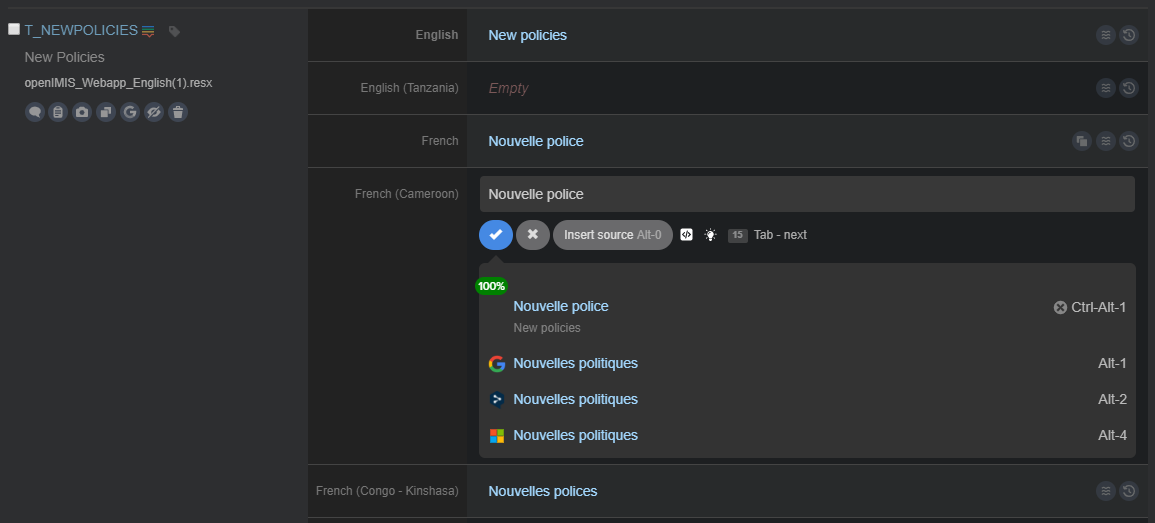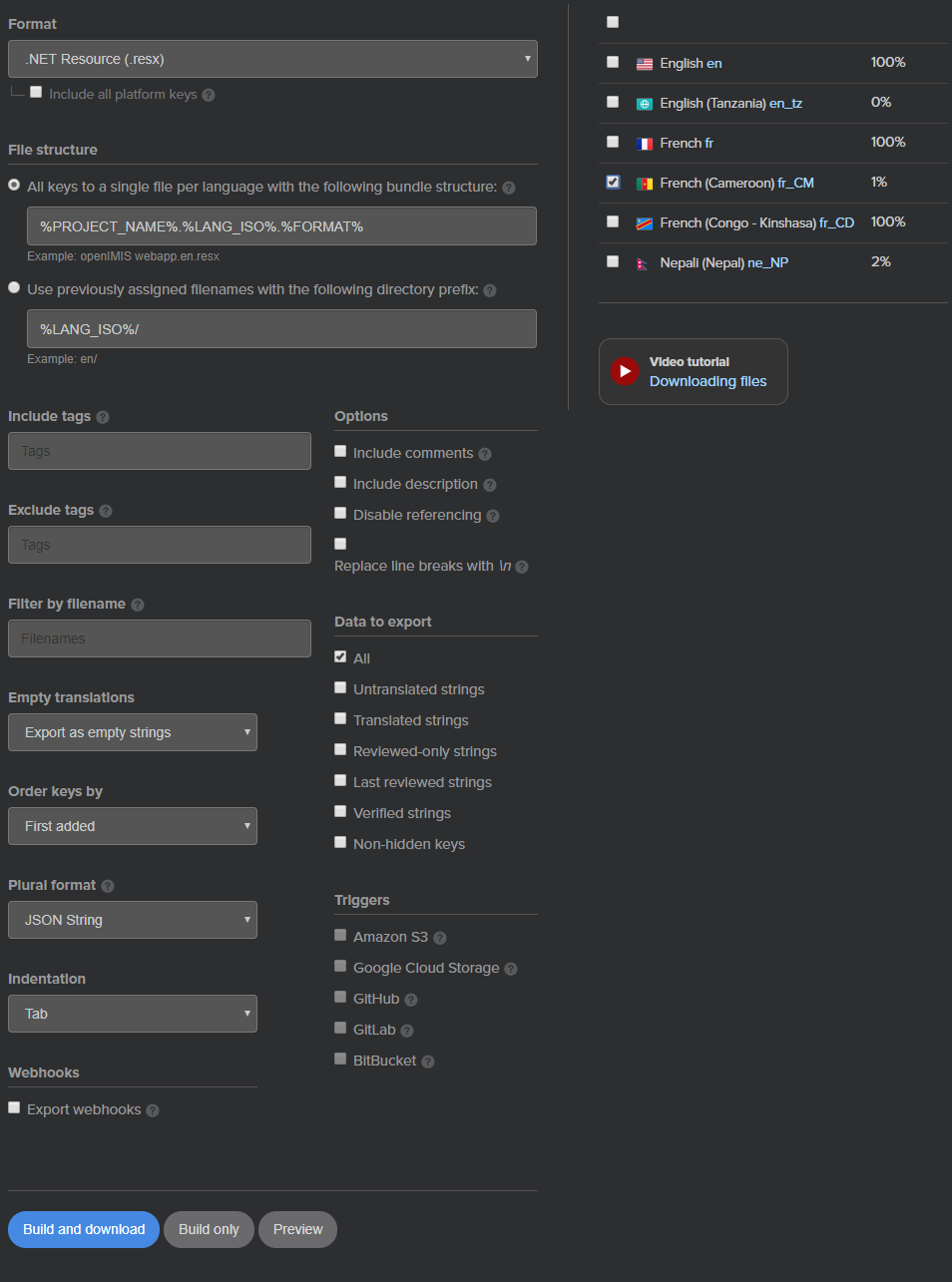| Info |
|---|
openIMIS components: Web Application v1.3.0 and later. |
...
| Widget Connector | |||||||||||
|---|---|---|---|---|---|---|---|---|---|---|---|
|
https://www.youtube.com/watch?v=KiAjKdmL5Q4
| Excerpt | ||||||||||||||||||||
|---|---|---|---|---|---|---|---|---|---|---|---|---|---|---|---|---|---|---|---|---|
Web Application .Net is supporting up to two languages. The language translation is done on the Web Application source code level (this page) and on the database level (see WA4.1 Language selection and translation tables). The Web Application language localisation is using the default ASP.Net Globalization and Culture configuration. The translation is based on resource files. The generic application is translated into English-language and French-language. In order to facilitate the translation of the Web Application and to have a common repository for language packs for openIMIS, we have subscribed to lokalise.com. If you wish to add new languages to openIMIS Web Application, you can request the access by visiting the Web Application project on lokalise. For more information on the translation platform please check Translation Management platform page. Add a new language for Web Application in lokalise
Add the new language in the Web Application project
To use the new language, the Web Application .Net solution needs to be published and deployed. Nevertheless, you cannot use the new language unless you update the language selection and translation tables in the database. Why Glossary is important Because there is multiple truth and it is often complex and can change over time, the terminology must have the same meaning and same wording in the whole Web Application. It is also important that the country-specific names are validated by the country implementing openIMIS. When using a glossary you ensure that you will use the same 'truth' across your application. In the case of lokalise, every time it will detect the glossary term, it will show the definition and the translation, allowing to be consistent in the translation package. For example, in Tchad there are the different organisation names which must be adapted in openIMIS:
|
Previous step: WA3.1 Escape procedures | Go to parent: WA3. Localise openIMIS at Web Application's source code level | Table of contents: Installation and Country Localisation | Next step: WA3.3 Deploy the localized Web Application |







